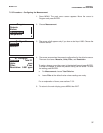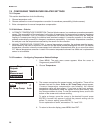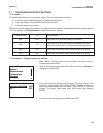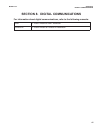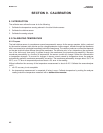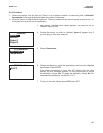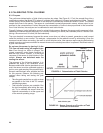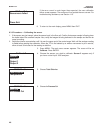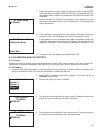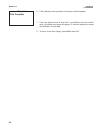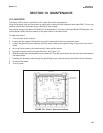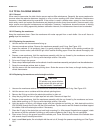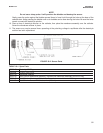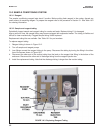
45
MODEL TCL SECTION 9
CALIBRATION
9.3.2 Procedure — Zeroing the Sensor
1. Place the sensor in a beaker of deionized water. Be sure no air bubbles are trapped against the membrane.
2. Observe the sensor current. The current will drop rapidly at first and then gradually reach a stable zero value.
To monitor the sensor current, press the DIAG key. Move the cursor to the chlorine sensor and press ENTER.
The input current is the first line in the display. Note the units: nA is nanoamps, uA is microamps. Typical zero
current for a 499ACL-02 sensor is -10 to +50 nA.
A new sensor or a sensor in which the electrolyte solution has been replaced may require several hours
(occasionally as long as overnight) to reach a minimum zero current. DO NOT START THE ZERO ROUTINE
UNTIL THE SENSOR HAS BEEN IN THE ZERO SOLUTION FOR AT LEAST TWO HOURS.
3. Press MENU. The main menu screen appears. The cursor will be on Calibrate. Press ENTER.
Calibrate
Sensor 1
Sensor 2
Output 1
Output 2
Sensor 1
4. Choose the sensor you wish to calibrate. Sensor 2 appears only if you
have a dual input 1056 analyzer.
5. Choose Total Chlorine.
6. Choose Zero Cal. The analyzer will automatically start the zero calibration
7. If the zero calibration was successful, the screen at left appears.
If the zero current is moderately larger than expected, an error message
appears. To force the analyzer to accept the zero current, choose Yes. To
repeat the calibration, choose No. For troubleshooting assistance, see
Section 11.5.
S1 Calibration
Temperature
Total Chlorine
S1 Calibration
Zero Cal
In Process Cal
Zero Cal
S1 Possible
Error, Proceed?
No
Yes
No
S1 Zero Cal
Sensor zero done



